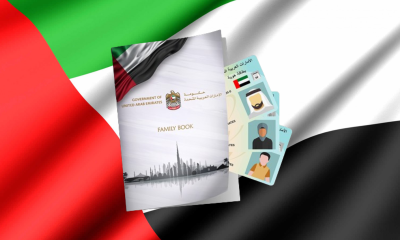Dh13 Billion Abu Dhabi Traffic Improvement Projects Begin. Abu Dhabi is making significant strides in upgrading its transport infrastructure with the launch of major traffic and road development projects worth Dh13.1 billion.
These projects are part of an ambitious plan to modernize the city’s transport network, reducing congestion, enhancing traffic flow, and improving safety for both vehicles and pedestrians.
The Integrated Transport Centre (ITC), now operating under its new identity as Abu Dhabi Mobility (AD Mobility), has announced the beginning of multiple large-scale initiatives aimed at tackling key transportation challenges.
A critical component of these initiatives includes expanding road capacity and introducing pedestrian-friendly infrastructure, which underscores Abu Dhabi’s commitment to a more integrated and accessible urban environment.
Strategic Focus on Sultan Bin Zayed the First Street Intersection
One of the standout projects currently underway is the expansion of the Sultan Bin Zayed the First Street intersection, a high-traffic area that has long been a source of congestion. The intersection is undergoing major modifications, including the addition of new traffic lanes and pedestrian pathways.
These enhancements are designed to accommodate an additional 3,500 vehicles per hour, significantly reducing bottlenecks and improving overall traffic efficiency.
By widening the intersection, AD Mobility aims to address a long-standing issue of vehicle overcrowding while simultaneously providing safer and more accessible routes for pedestrians. The introduction of expanded pedestrian pathways is particularly notable, as it reflects the city’s broader goal of enhancing walkability and promoting sustainable transport options, such as walking and cycling, throughout the urban area.
A Multi-Billion-Dollar Investment in Abu Dhabi’s Future
The Dh13.1 billion investment represents one of the largest infrastructural commitments in recent years. This multi-faceted approach is not limited to road expansions and pedestrian paths but also encompasses advanced technological upgrades aimed at smart traffic management.
With population growth and increased vehicle ownership, Abu Dhabi has recognized the need for an adaptive and future-forward transport system that minimizes delays, reduces environmental impact, and increases safety.
This massive outlay is expected to have a ripple effect on various sectors, particularly by attracting investment in real estate, tourism, and local businesses. An improved transport network facilitates economic growth, as it makes the movement of goods and people more efficient, boosting commerce and enhancing the quality of life for residents and visitors alike.
Pedestrian Pathways and Sustainability in Focus
In line with Abu Dhabi’s sustainability goals, these infrastructure projects are being developed with a focus on reducing the carbon footprint of urban transportation. By improving pedestrian pathways and encouraging more foot traffic, AD Mobility is actively working to reduce reliance on personal vehicles. This not only helps ease congestion but also promotes a healthier and more environmentally-friendly mode of transport.
Pedestrian safety is another critical priority in the current phase of development. The new pathways are designed to make crossing streets easier and safer, especially in high-traffic areas such as the Sultan Bin Zayed intersection. With enhanced signage, wider sidewalks, and improved lighting, Abu Dhabi is addressing the safety concerns that often accompany increased urbanization.
Long-Term Vision for Abu Dhabi’s Transport System
The ongoing projects are a vital part of Abu Dhabi’s long-term strategic vision for creating a smart, sustainable, and fully integrated transport system. In addition to reducing traffic congestion, these projects will likely incorporate cutting-edge technologies like intelligent traffic signal systems, which can adjust in real-time to changing traffic conditions.
Such innovations are essential for managing the city’s growing population and increasing number of vehicles on the road. Moreover, AD Mobility’s role in overseeing these developments under its new identity signals a broader shift in Abu Dhabi’s transport strategy.
The organization aims to transform how residents and visitors navigate the city, making it easier to switch between different modes of transportation, such as buses, trams, cycling, and walking. The emphasis on multi-modal transport options is key to reducing the strain on road infrastructure while fostering a more environmentally sustainable urban environment.
Financial Implications and Economic Impact
From a financial perspective, the Dh13.1 billion allocation towards these projects is not just an expenditure but an investment in the city’s future. Improved transportation infrastructure has been shown to contribute directly to economic growth by reducing travel time, improving logistics, and attracting new businesses. Furthermore, construction activities associated with these projects are expected to create thousands of jobs, thereby boosting the local economy in the short term.
The integration of advanced technology within the new road networks also presents significant financial benefits. Smart traffic management systems can reduce maintenance costs and improve energy efficiency, both of which are essential for the long-term economic sustainability of Abu Dhabi’s infrastructure.
Investors are likely to view these improvements favorably, particularly as they align with the broader economic diversification goals set by the government. By improving transport logistics, Abu Dhabi enhances its attractiveness as a hub for international business, tourism, and trade. The ripple effects of these projects will likely extend into the real estate market, with improved infrastructure increasing the value of properties located near major traffic nodes.
Conclusion
The Dh13 billion traffic and road infrastructure projects currently being implemented across Abu Dhabi are more than just a response to congestion; they represent a forward-thinking approach to urban mobility. By addressing current transport challenges while laying the groundwork for future growth, Abu Dhabi is setting the stage for a more connected, sustainable, and economically vibrant future.

 Fine3 months ago
Fine3 months ago
 Blog8 months ago
Blog8 months ago
 Fine8 months ago
Fine8 months ago
 EMIRATES INFO HUB8 months ago
EMIRATES INFO HUB8 months ago
 News7 months ago
News7 months ago
 Blog8 months ago
Blog8 months ago
 EMIRATES INFO HUB8 months ago
EMIRATES INFO HUB8 months ago
 EMIRATES INFO HUB8 months ago
EMIRATES INFO HUB8 months ago
 Blog8 months ago
Blog8 months ago
 Blog8 months ago
Blog8 months ago
 Blog8 months ago
Blog8 months ago
 Blog8 months ago
Blog8 months ago










